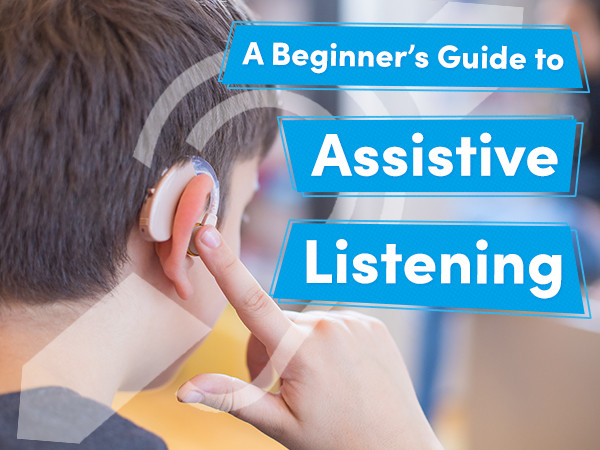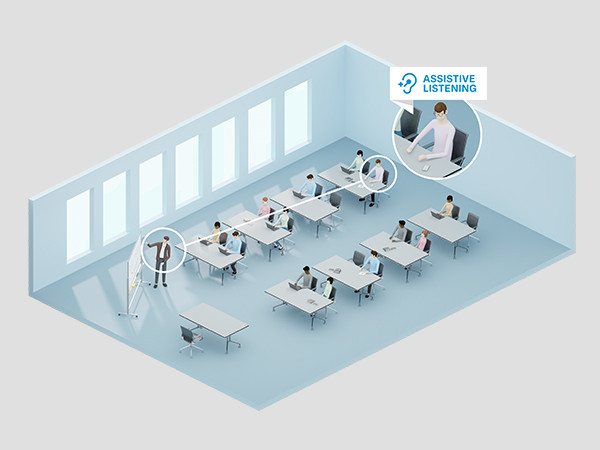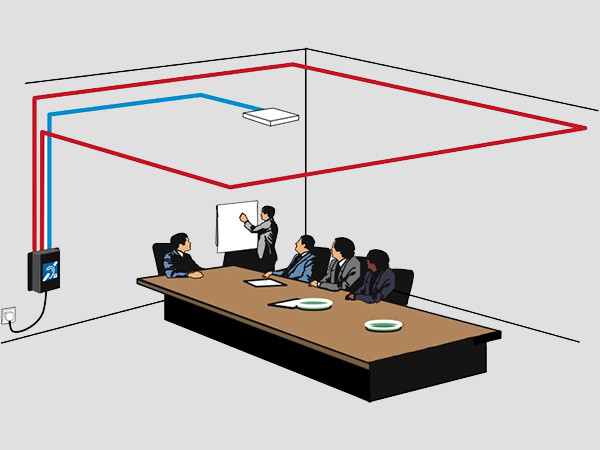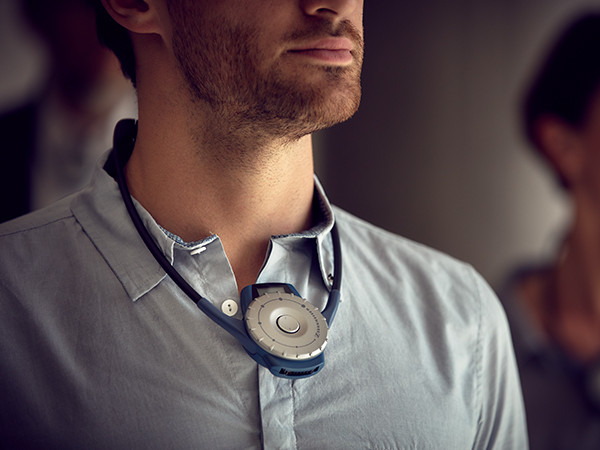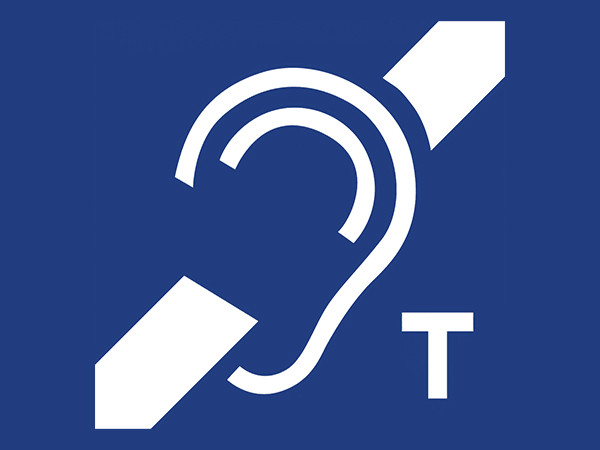A Beginner’s Guide to Assistive Listening
Posted on: 27th October 2022
How many hearing loops have you installed in your projects? Have you ever pitched an IR radiator as part of an install scope? If your answer to both of these questions is “no”, or you’ve never heard of these types of systems before, this could be the perfect opportunity for you to expand your business.
Assistive listening systems are an often-overlooked component of install projects, typically with a lack of awareness being to blame. With an ageing population and a rise in hearing disabilities in the UK, assistive listening is not only an important consideration for businesses, venues and other non-domestic installations; they are an essential.
Who needs assistive listening devices?
Hearing loss affects around 1 in 6 people in the UK (approx. 11 million) making it the second most common disability affecting UK adults. There are numerous physical and mental health conditions that can contribute to hearing loss, as well as changes in lifestyle and the increase in life expectancy.
It’s thought over 7 million people could benefit from a hearing aid or other device to help with their hearing. However, with the stigma surrounding hearing impairments, venues aren’t always as aware of the issue, and many people are reluctant to investigate their hearing loss or request assistance or access from establishments; despite hearing accessibility being a legal requirement.
Why are Assistive Listening Solutions required?
The Legal Stuff
There’s a wide range of standards and legislations active in the UK which describe the law and regulations around disability. The following legislature detail anti-discrimination and inequality laws, disability access, building regulations, signage, environmental considerations, performance standards and codes of practice to support those with hearing disabilities:
- UK Equality Act 2010
- The Building Regulations Part M – Volume 2
- British Standards 8300
- Hearing / Induction Loop Performance Standards - IEC 60118-4
- Code of practice for hearing loop systems (HLS)
“Service providers are required to make changes, where needed, to improve service for disabled customers or potential customers. There is a legal requirement to make reasonable changes to the way things are done; to the built environment and to provide auxiliary aids and services (such as an induction loop for customers with hearing aids).” - UK Equality Act 2010
Where should assistive listening be available?
In a nutshell, noisy areas like retail stores, pay and information points with security screens, education, meeting and performance spaces should be fitted with hearing enhancement systems. Education for example is already an incredibly stressful and trying environment for young and mature students alike; adding a discrete assistive listening solution to classrooms and lecture halls can make all the difference to a student’s success and mental health.
Failure to appropriately accommodate for hearing disabilities discriminates against a significant proportion of the population, causing unnecessary distress to those using a space. Forgiving the obvious moral and lawful obligations to provide support, by not doing so businesses are also telegraphing their disregard for this hidden disability and actively discouraging people from engaging with that business.
That’s where companies like Ampetronic, Listen Technology, Sennheiser, SigNET and Williams AV come in. Each brand provides a wide range of assistive listening solutions to suit any space and application, giving you the tools and expertise to add assistive listening solutions to your install portfolio.
What are Assistive Listening devices?
Just like there are many different types of hearing disability with varying symptoms and difficulties, there’s a wide range of assistive listening systems to choose from; each featuring unique technologies, benefits and drawbacks:
Hearing Loops
Hearing loop systems use induction technology to wirelessly transmit audio directly to compatible hearing aids and headsets allowing users to tap into audio with their own devices. These systems are incredibly versatile, consisting of a microphone to pick up the speaker(s), an amplifier, and a magnetic loop to transmit a signal. Hearing loops can be scaled up almost indefinitely, ranging from portable desktop systems to large-scale integrated solutions.
While hearing loops are a great solution for most situations, there are many factors to consider which need to be considered before installation. For example: metalwork in ceilings and floors can impede transmission, crossover of loops can cause interference between systems and signals can be intercepted by anyone making loops susceptible to eavesdropping.
Infrared
Infra-Red systems offer a flexible and cost-effective alternative in areas unsuitable for hearing loops, such as rooms with metal in the ceiling or floors that interfere with induction signals. Working just like a TV remote, IR systems use a ‘radiator’ to project infrared light into a space where the signal is picked up by systems that are typically worn around the neck with headphones attached.
IR systems are very effective for distributing sound and can be easily scaled up indefinitely by adding more transmitters and receivers. This makes them ideal for non-permanent installations like museum exhibits and even makes them suitable for non-disabled users. However, since users must be given a physical receiver to wear, IR systems are far less inconspicuous than hearing loop systems making them less desirable for those who’d rather not draw attention to themselves. IR systems are also unsuitable for very crowded applications since they operate on a line-of-sight basis.
Wi-Fi & Bluetooth
A number of brands including Listen Technologies, Sennheiser and Williams AV provide Wi-Fi enabled systems designed to work with beltpack receivers or a user’s smartphone. The benefits of Wi-Fi systems are obvious, with the ability to cover large areas and transmit through certain materials, as well as being compatible with any user's smartphone. However, interference can occur in areas with high amounts of users or conflicting Wi-Fi signals.
While Bluetooth still hasn’t quite caught up with large scale assistive listening solutions, there are many options for Bluetooth enabled hearing aids. This combined with the success of true wireless earbuds and the prevalence of smartphones means personal wireless audio has never been more accessible to the hard of hearing.
Signage
An assistive listening solution without any indication it’s there is just as bad as no system at all. Thankfully, Our brands also supply signs and stickers to inform customers and users of a space that there is an induction loop available for hearing aid users.
Microphones and Sources
At the heart of all assistive listening solutions is the goal to amplify sound for the users' benefit. Some manufacturers provide system bundles which include a microphone; however, depending on the space and application, your client might require a specialist microphone or source solution. In a lecture hall for example, a Sennheiser SpeechLine wireless mic could be plugged into a MobileConnect Wi-Fi system, giving the lecturer the freedom to move around the room while teaching. Alternatively, a SigNET PDA103L Loop Kit could be paired with a Biamp Parle TTM-X tabletop mic to actively track speakers around a small meeting room.
How easy is it to install Assistive Listening systems?
With access for the hard of hearing backed by governments and international organisations, businesses have a clear-cut template to follow when planning construction and renovation projects. However, if businesses and integrators aren’t aware of the regulations or proper install practices, systems are unlikely to perform well if at all.
According to site surveys gathered by Ampetronic [2020], approximately 50% of hearing loop systems they encountered were non-functional either through failure or poor installation; with around 5% being standard compliant. These figures are quite damning for those who rely on assistive listening solutions to go about their working and personal life; after all, an assistive listening system that doesn’t work is just as good as no system at all – only more expensive.
As an example, hearing loops can be a complex system to master, with a lot of technical limitations that restrict where they can effectively perform. While RF and digital systems, such as Sennheiser’s Mobile Connect, can be installed, moved and updated relatively easily, large scale hearing loops are generally permanent and static, and therefore, at the mercy of future developments in a space. These are all things that need to be considered when choosing a system and at the end of the day, it’s up to the installer to advise the best solution for a space to satisfy standard compliance.
Assistive listening systems can be a fantastic addition to your skillset and install portfolio, opening your business up to more opportunity in a wider range of applications and industries.
While it can be difficult to know where to begin if you’re just beginning to branch out into assistive listening. There’s also a wide range of education and training resources available online from our brands Ampetronic, Listen Technology, Sennheiser, SigNET and Williams AV; and as always, if you have any questions, contact our team on 01525 850085 or email sales@leisuretec.co.uk to discuss your projects.
